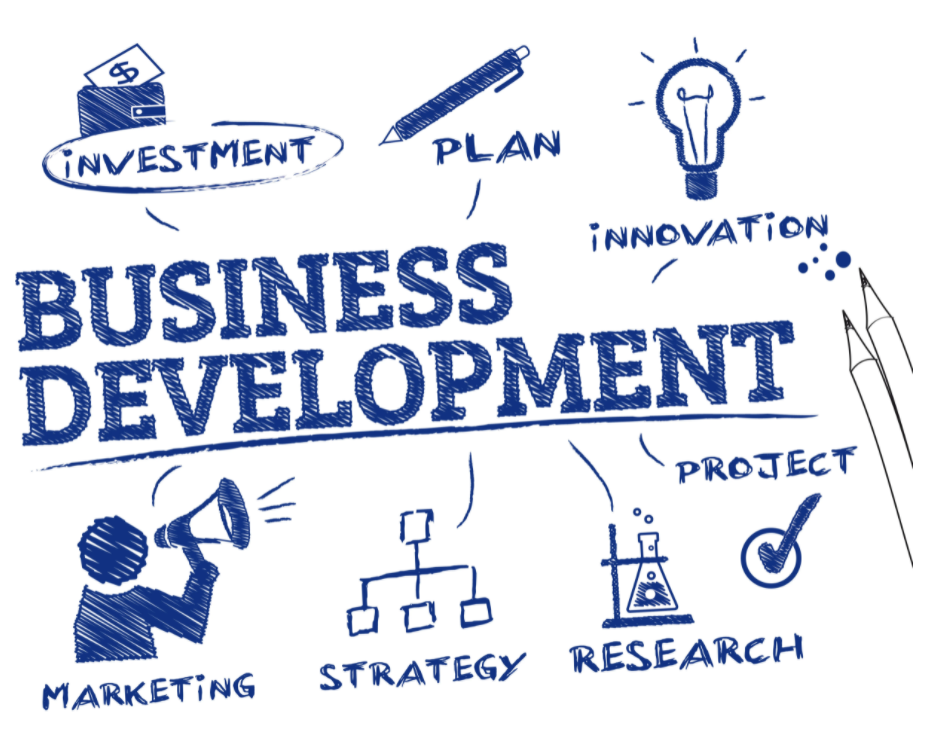What Are the Basics Of Business Development?
In the simplest terms, business development can be summarized as the ideas, initiatives, and activities that help make a business better. This includes increasing revenues, growth in terms of business expansion, increasing profitability by building strategic partnerships, and making strategic business decisions.
KEY TAKEAWAYS
- Business development encompasses a wide scope of ideas, activities, and initiatives that a business owner and management implement with the goal of making the business better.
- Business development can include many objectives, such as sales growth, business expansion, the formation of strategic partnerships, and increased profitability.
- Successful business development impacts every department within a company, including sales, marketing, manufacturing, human resources, accounting, finance, product development, and vendor management.
- Business developers should be aware of new market opportunities, possibilities for expansion, competitor developments, and the current sources of the company’s revenue.

Understanding the Basics of Business Development
Business development activities extend across different departments, including sales, marketing, project management, product management, and vendor management. Networking, negotiations, partnerships, and cost-savings efforts are also involved. All of these different departments and activities are driven by and aligned with the business development goals.
For instance, a business has a product or service which is successful in one region. The business development team assesses further expansion potential. After all due diligence, research, and studies, it finds that the product or service can be expanded to a new region.
Marketing
Marketing involves promotion and advertising aimed towards the successful sale of products to end customers. Marketing plays a complementary role in achieving sales targets. Business development initiatives may allocate an estimated marketing budget. Higher budgets allow aggressive marketing strategies like cold calling, personal visits, roadshows, and free sample distribution. Lower budgets tend to result in passive marketing strategies, such as limited online ads, print ads, social media ads, and billboards.
Strategic Initiatives or Partnerships
To enter a new market, will it be worth going solo by clearing all required formalities, or will it be more sensible to form a strategic alliance or partnership with local firms already operating in the region? Assisted by legal and finance teams, the business development team weighs all of the pros and cons of the available options and selects the one that best serves the business.
Project Management/Business Planning
Does the business expansion require a new facility in the new market, or will all the products be manufactured in the base country and then imported into the targeted market? Will the latter option require an additional facility in the base country? Such decisions are finalized by the business development team based on their cost- and time-related assessments. Then, the project management/implementation team swings into action to work towards the desired goal.
Product Management
These requirements drive the work of product management and manufacturing departments, as decided by the business strategy. Cost consideration, legal approvals, and regulatory adherence are all assessed as a part of a business development plan.
Vendor Management

Will the new business need external vendors? For example, will the shipping of a product need dedicated courier service? Will the firm partner with any established retail chain for retail sales? What are the costs associated with these engagements? The business development team works through these questions.
Negotiations, Networking, and Lobbying
A few business initiatives may need expertise in soft skills. For example, lobbying is legal in some locales and may become necessary for penetrating the market. Other soft skills like networking and negotiating may be needed with different third parties, such as vendors, agencies, government authorities, and regulators. All such initiatives are part of business development.
Cost Savings
Business development is not just about increasing sales, products, and market reach. Strategic decisions are also needed to improve the bottom line, which includes cost-cutting measures. An internal assessment revealing high spending on travel, for instance, may lead to travel policy changes, such as hosting video conference calls instead of on-site meetings, or opting for less expensive transportation modes.
Management can implement similar cost-saving initiatives by outsourcing non-core work, such as billing, accounting, financials, technology operations, and customer service. Strategic partnerships needed for these initiatives are a part of business development.
What Should a Business Developer Know?
Since business development involves high-level decision making, the business developer should remain informed about the following:
- The current state of the business in terms of SWOT analysis (strengths, weaknesses, opportunities, and threats)
- The current state of the overall industry and growth projections
- Competitor developments
- Primary sources of sales/revenues of current business and dependencies
- The customer profile
- New and unexplored market opportunities
- New domains/products/sectors eligible for business expansion, which may complement the existing business
- The long-term view, especially with regards to the initiatives being proposed
- The cost areas and the possible options for cost-savings
The Business Plan

The business development scenario discussed above is specific to a business expansion plan, whose impact can be felt by almost every unit of the business. There can be similar business development objectives, such as the development of a new business line, new sales channel development, new product development, new partnerships in existing/new markets, and even merger and acquisition.
For example, in the case of a merger, significant cost savings can be accomplished by integrating the common functions of the manufacturing, finance, and legal departments of the two firms. Similarly, a business operating from five different offices in a city can be moved to a large central facility, resulting in significant operating cost savings. However, would this lead to employee attrition, if the new location isn’t convenient for everyone? It’s up to the business development team to assess such concerns.
In essence, business development involves high-level decision-making based on a realistic assessment of all potential changes and their impact. Through new ideas and initiatives, it aims to improve the overall business prospects, which drive the functioning of the different business units. It is not sales; it is not marketing; it is not partnering. Instead, it is the eco-system encompassing the entire business and its various divisions, driving overall growth.
Another article on this blog that may interests you:
Business coach: Who is he, what he does, and what requires for the profession
